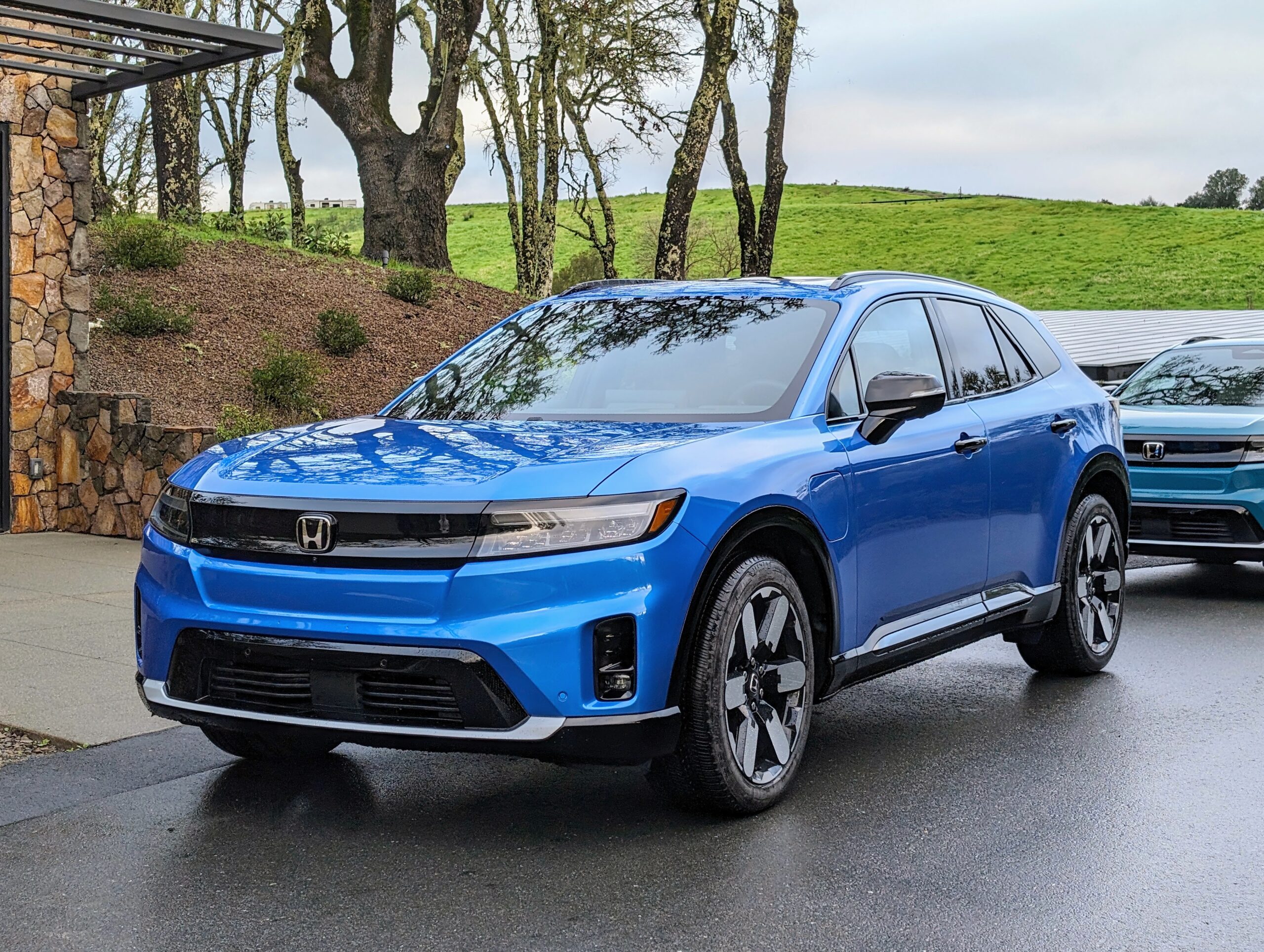Sign up for daily news updates from CleanTechnica on email. Or follow us on Google News!
A few days ago I published a reaction to a set of reactions to an article on the plummeting cost of batteries and how they enable megawatt scale charging. What were the reactions about? Battery swapping, which many people seem to think is the bees knees and should be everywhere. I disagreed, and people willingly shared data which challenged my argument, for which I thank them. It doesn’t, however, change my opinion much, at least not yet.
What is my position on battery swapping? It’s four-fold. First, if a battery can be swapped by hand by a person with poor upper body strength, think two- and three-wheelers batteries, there’s potential for battery swapping, but it’s far from a slam dunk. Second, if batteries are in standard shipping containers and can be moved with standard transshipment terminal equipment like cranes, reach stackers and straddle carriers, then there’s a strong opportunity.
Third, the for vehicles in between, a bunch of conditions have to exist for battery swapping to make sense. It has to be a fleet. The fleet has to be homogenous, with a set of close to identical vehicles from the same manufacturers. The fleet has to have very heavy operational requirements. The fleet has to work within a reasonably tight geographical boundary or have very well known routes. The fleet has to be able to be de-risked from vendor lock-in. The volumes have to be very high so that the cost of an automated battery swapping and charging facility, often over a million USD, as well as all of the extra batteries can be amortized across a very large set of swaps per year.
Finally, the market for vehicles with swappable batteries has to be very big and dominated by a few major vehicle manufacturers to accommodate the engineering of swappable batteries and automated swapping systems.
An example are cement trucks in a large urban area, where a set of identical electric trucks are running from the concrete batching plant to work sites in the city, driving to the sites, pouring their concrete and returning for a fresh batch multiple times per day, with multiple shifts per day. This is mostly for Asian construction, which I know from personal experience is a 24/7/365 operation having watched an old sports stadium disappear and then a new, much bigger facility appear from my condo windows in Singapore over a year or so.
Beijing, for example, has roughly 9,000 cement trucks operating out of what I estimate are 30 to 40 concrete batching plants. Beiben is one of biggest suppliers of cement trucks, including electric cement trucks and battery swapping systems for them.
Another example is forklifts, where major 24/7 distribution centers like many of Amazon’s might have up to 200 forklifts in the facility, all in fairly constant use.
There is potential for this with drayage trucks in the biggest container ports, the ones that run 24/7, with containers constantly moving from distribution centers to the port and vice versa. As noted in the article on swapping, US ports don’t run 24/7, but 21/5 for the most part, unlike most of the rest of the world. There is more potential for drayage swapping globally.
However, there isn’t much potential for port ground vehicles because there are only about 120,000 of them in the 900 or so big container ports in the world, there are three or four very differently shaped and sized vehicles, and there are a bunch of different manufacturers.
This is part of one of the data points people who love swapping brought to my attention, that almost 50% of China’s electric truck sales in 2022 were swap capable. Most of them referenced an article which extolled this as the future of all electric vehicles, but nobody looked at the ICCT report which the article was based on. That report by China-based ICCT staff visited a number of swapping stations, compiled the statistics and reported on governmental efforts in the space. It is clear that while almost half of vehicles were sold with the capability of swapping their batteries, the number that were actually swapping batteries was much smaller.
And as the report also says:
These swap-capable electric trucks are mainly used for short-haul applications at ports, mining sites, and in urban logistics.
In other words, the types of usage patterns I have outlined where it makes sense.
This is a Chinese governmental initiative in certain heavy vehicle segments where it’s advantageous, likely following the conditions above, but it’s hindered by the complete lack of standardization across manufacturers, one of the conditions of success noted, and by the high cost of automated swapping stations. Once again, this speaks to fleet homogeneity across vehicle manufacturer and vehicle type.
Meanwhile, in Australia a company has a terrible system that involves a human forklift operator swapping batteries on a few trucks. That’s not scalable or even remotely interesting except as an example that some people will try anything. It won’t end well, and won’t spread.
At the other end of the scale, there are two- and three-wheelers. Gogoro was pointed out to me again (and again and again) as if I might be unaware of it. The thing is, Gogoro is a pump and dump SPAC play whose stock is off 85% from the pumped peak and which lost US$70 million last year. The only thing most SPAC plays are good at is the hype part of it, so a lot of people have heard of it and think it’s winning. Not so much.
However, at a recent seminar in my India series where I was speaking with assembled electrical utilities resources about storage, I spoke about the lower merit of vehicle to grid vs demand management of charged batteries, and referenced the significant opportunities provided by dirt cheap batteries in terms of buffering electricity at truck stops. This triggered a discussion of battery swapping in India, where the Indian Smart Grid Forum under whose auspices the seminar series is proceeding had done a study of the subject for two- and three-wheelers and recommended that the government require that electric ones be sold without batteries to make the purchase price a lot cheaper.
This worked out fairly well and every village now has two or three swapping stations per the discussion. It’s hindered by a lack of standardization across vendors, one of the big challenges of swapping solutions, but it muddles through. However, innumerable non-swapping two- and three-wheelers have been hand built or built in small batches by work shops because it’s so cheap and easy to do, and these are also a constant presence on the streets of India. Only about 10% to 15% of two-wheelers have swappable batteries, with a higher percentage among three-wheelers, the combined pickup truck, delivery truck and taxicab of a lot of Indian cities.
At this scale, frail human arms can pull a simple battery with no thermal management systems out of a scooter and drop it into a charging rack, and then reverse the process with a charged battery. Once again, numbers and zero automation make this viable.
Then there’s the outlier in the middle, NIO. It sells eight models of cars and SUVs, all with battery swapping as well as the ability to plug in to charge. They’ve sold almost 500,000 vehicles. According to reports, about 60% of owners use swapping at least occasionally, although actual usage statistics are pretty scant. The public data is a factoid released by the company, not a set of usage statistics, which is quite reasonable. They have around 2,400 swapping stations, almost entirely in China.
They do sell their cars in 13 other countries, and in Europe have some swapping stations, in Norway (10), Germany (9), the Netherlands (9), Sweden (8), and Denmark (1). NIO also operates around 2,179 supercharging stations in China, offering 10,028 chargers. Meanwhile there are about 470,000 high-speed chargers among the roughly 2.1 million public chargers in the country. There are 100,000 gas stations in the country as well.
In other words, in every market that NIO is in, high-speed charging and other charging approaches dominate, including chargers it operates itself in China. The ratios make it clear that battery swapping does not remotely dominate NIO owner patterns and is a convenience that just over half of owners take advantage of when it’s convenient and on their way someplace.
For NIO owners in China, the cost of battery swapping is included in some subscription packages. Typically, a subscription that includes six swaps per month for a 70.0-kWh battery pack costs about $142 per month. In Europe, the cost structure includes a flat fee plus a per-kWh charge. As of the latest available information, NIO charges a flat fee of €10 per swap, plus €0.20 per kWh. For example, a 100 kWh battery swap would cost approximately €30 in total. This is actually cheaper than high-speed charging in Europe it turns out, so clearly NIO is pricing the cost of swapping significantly into the price of purchasing the vehicle, including the risk of batteries just going walk about.
As with anything like this, there have been technical glitches, mismatches of available charged batteries to cars wanting them and queues, in part because the space they occupy could house from 6 to 20 fast chargers instead. They also require a lot more maintenance than a fast charger which typically has no moving parts, so regular and unscheduled maintenance is higher, although probably still lower than for hydrogen refueling stations. Reports appear to indicate NIO owner satisfaction and relatively good service, and it’s not like electric vehicle charging that’s not from Tesla, a couple of European vendors and many Chinese vendors has been highly reliable so far.
Personally, I think NIO is going to give up on this eventually, but perhaps they’ll maintain it as a differentiator. They sell high-end cars to well-heeled individuals who undoubtedly consider their time valuable, whether it is or not. But it’s not like they are making money doing it. Over the past four years, NIO has reported net losses of $2.98 billion in 2023, $2.07 billion in 2022, $813 million in 2021, and $1.61 billion in 2020, about 75% of their current market capitalization. NIO is ten years old, and Tesla started turning a profit in its tenth year, by comparison. NIO’s losses are increasing not decreasing. Here are the losses per vehicle of the equivalent four years in NIO and Tesla over the four equivalent years of their lifespan.
| Year | NIO Losses per Vehicle (USD) | Tesla Losses per Vehicle (USD) |
|---|---|---|
| 2020 | 36,799 | 101,600 (2011) |
| 2021 | 8,890 | 127,742 (2012) |
| 2022 | 17,063 | 3,319 (2013) |
| 2023 | 22,276 | 9,289 (2014) |
Interestingly, Tesla’s losses per vehicle were much higher but radically diminishing. NIO’s dropped and were increasingly substantially. Not remotely a firm indicator, but I suspect it’s indicative.
Sharp eyes will have noticed I promised four conditions of success and only stated three. Some of them will leave comments, not having the patience to read this far. The fourth pre-condition, at least so far outside of the huge distribution center forklift space, is a governmental initiative to drive battery swapping. That’s true in India and true in China. Will it remain true? It’s hard to say. China famously crosses the river by feeling for stones with its feet with each step, the extension being that they have an awful lot of feet trying to cross an awful lot of rivers, so the successes are much more obvious than the failures (such as hydrogen for ground transportation). It’s very hard for private companies to make battery swapping make economic sense.
As for truck stops on highways? Not a chance they’ll be seeing battery swapping systems in my opinion. There’s zero consistency of vehicle types, no business model for sharing batteries and a host of other problems. Delivering electricity through chargers is completely reasonable given usage patterns.
Does this mean that battery swapping won’t spread more than I consider likely? Of course not. As I frequently say, anything China does at scale is quite likely to be the answer in a lot of other countries as well. That almost half of electric trucks in China were sold with swap-capable batteries, even if they aren’t using that capability, makes me sit up and take notice. If data shows that my perspective is wrong, I change my mind. At present I think my take on swapping — which hasn’t changed since the first swapping article — is more likely correct, but if moving big hunks of metal containing electrons dominates a lot more markets than just moving electrons, I’ll be surprised, but lean into it.
Have a tip for CleanTechnica? Want to advertise? Want to suggest a guest for our CleanTech Talk podcast? Contact us here.
Latest CleanTechnica.TV Videos
CleanTechnica uses affiliate links. See our policy here.





